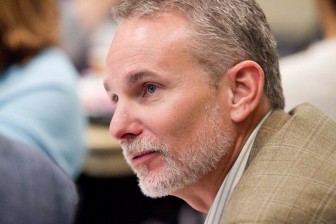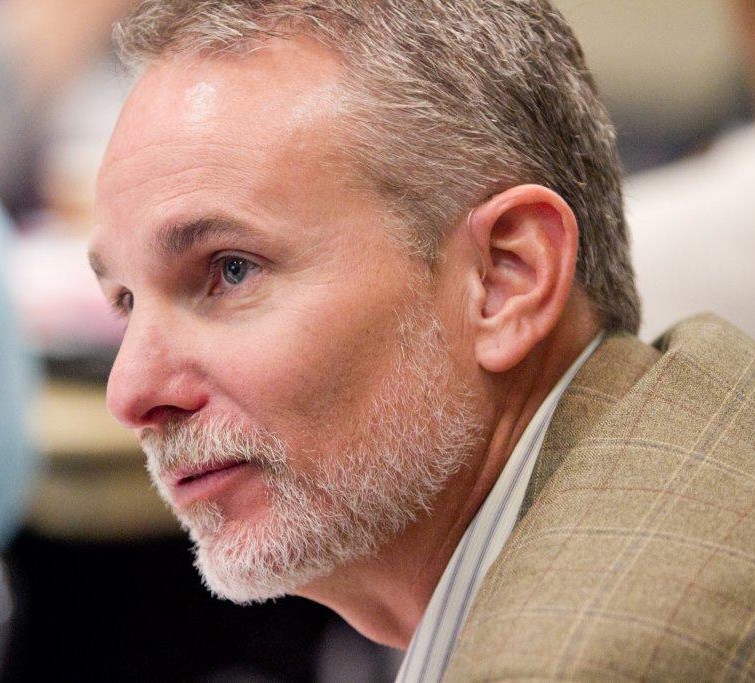 Economic competitiveness. Public safety. Income inequality. Racism. These are a few of the issues being debated this election season. Most likely you will hear about the achievement gap. It is clearly tied into these issues. Candidates will be talking about various solutions for closing the achievement gap. As in years past, the “solutions” remain focused on the classroom.
Economic competitiveness. Public safety. Income inequality. Racism. These are a few of the issues being debated this election season. Most likely you will hear about the achievement gap. It is clearly tied into these issues. Candidates will be talking about various solutions for closing the achievement gap. As in years past, the “solutions” remain focused on the classroom.
But we should not expect a young person to walk into the classroom ready to learn when the night before he or she experienced trauma. It could be a parent snapping under the stress of trying to make ends meet. It could be witnessing violence in the streets or hearing another round of gunshots from down the block. As youth workers know, the list is endless.
There are so many reasons we should be pushing candidates to think beyond the classroom. And in using this broader perspective, it becomes obvious that we have more than an achievement gap. We have a learning gap. Youth will not achieve in the classroom if they don’t come to class ready to learn.
It’s not just youth workers who understand this. Any teacher will tell you that factors outside the classroom greatly influence performance in the classroom. The reality is that: a) youth spend twice as much time outside the classroom as they do in the classroom; and b) learning occurs outside the classroom, as well as inside the classroom. Any solution to the achievement gap that ignores this reality and narrowly focuses on schools and the classroom will not succeed.
If we are going to see meaningful changes in the achievement gap, we need to start talking about the learning experiences that occur beyond the walls of a school. We need to be talking about out-of-school time programs and other forms of youth intervention that are generally provided outside the school setting. They address the core issue, which is the learning gap.
Youth intervention programs provide opportunities and relationships that can motivate students to learn. From these experiences and relationships, youth develop self-confidence and also connections to a broader network of caring adults. Meaningful relationships that provide trust and security for youth are what any youth needs in order to enter the classroom ready to learn.
By connecting youth to youth intervention programs, we can begin eliminating the achievement gap.
Youth intervention can take many forms, ranging from mental health counseling to mentoring to court diversion. They even include programs that foster the entrepreneurial spirit within a youth. The commonality of youth intervention programs is that they are designed to support youth who have lost sight of the need to learn and have fallen out of the broader community.
[Related: Why Do Low-Income Kids Suffer So Much Summer Learning Loss?]
The positive changes in behaviors that youth intervention programs are bringing about in youth have been documented. In a recent survey conducted by the Minnesota Office of Justice Programs, 80 percent of the youth surveyed in intervention programs did not reoffend. Better grades and improved behaviors in school and community were reported by 50 percent of the youth. Additionally, 61 percent reported abstinence from alcohol, 67 percent reported abstinence from marijuana and 85 percent reported abstinence from “other drugs.”
Youth intervention programs are not just dollars being thrown at youth. They are cost effective. A benchmark social return on investment study conducted by the University of Minnesota and the Wilder Foundation demonstrates a $5 return on every $1 invested in youth intervention. In Minnesota, the return on investment is 10 to 1 when state youth intervention grant money is included. This is due to the required match of $1 from local community funding for $1 of youth intervention grant money.
Clearly good teachers, supportive parents and an excellent educational environment are all important factors that will close the learning gap. But we can’t stop there. Learning beyond the classroom prepares youth for learning in the classroom.
Closing the learning gap is analogous to a space mission. An astronaut does not venture into space alone. A highly trained team with different skill sets makes a successful space mission possible. Like an astronaut being sent into space, a student needs a diverse team to support their learning ventures, with the target success in the classroom.
The simple response to the achievement gap is to focus on schools. But elected officials and other policymakers need to realize that the simple response is not the effective response. Focusing on the classroom as if it exists in a vacuum will never allow us to close the learning gap.
Elected officials and other policymakers need to think more broadly. Their vision needs to include youth intervention. They must begin to provide meaningful support to these programs that are offering experiences outside the classroom that promote learning and community connections. Supporting youth intervention will let schools get back to basics and focus on teaching.
With youth intervention, we reverse the likelihood of a growing number of our youth becoming a burden to society. Instead, we help them become caring, productive, tax-paying members of society. Youth intervention works, it saves money and we need more of it.
Paul Meunier, executive director for the Youth Intervention Programs Association (YIPA), oversees its advocacy and professional training services. He served as the mayor of Ham Lake, Minnesota, after being city councilman and has spent much of his career working directly with high-risk youth.
More related articles:
NSLA Chief Urges Support for Summer Learning — Especially on Friday
Two-generation Approach Serves Both Kids and Parents
Does ’30 Million-Word Gap’ Have Gap in Authenticity?




























